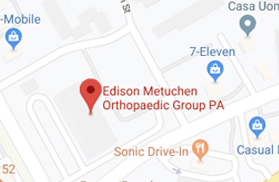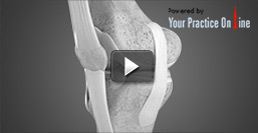SI joint fusion
The sacrum is a triangle shaped bone found in the base of the spine. The iliac bones are the two large bones that form the pelvis. The sacrum and the iliac bones or ilium are connected together by strong ligaments and the junction where these bones meet is referred to as the sacroiliac joint. The hip area plays an important role in supporting the entire upper body weight during body movements (standing, walking, sitting, bending, etc.). This generally leads to wearing and tearing of the cartilage at the sacroiliac joint resulting in sacroiliac joint dysfunction. The people suffering from sacroiliac joint dysfunction may experience low back pain, inflammation, stiffness and pain in the leg, thigh, groin and hip. This condition is initially treated non-surgically with anti-inflammatory and analgesic medicines, sacroiliac joint belt, physical therapy and cortisone injections. If the nonsurgical methods do not prove to be effective then your doctor might recommend you to undergo sacroiliac fusion. Sacroiliac fusion is a surgical procedure which involves fusing of the iliac bones and sacrum for stabilization.
Indication
Your doctor may recommend sacroiliac fusion surgery if you are experiencing severe sacroiliac joint dysfunction due to arthritis, injury due to accidents or falls, being overweight, uneven leg lengths, gout, and spondylitis.
Pre-surgical care
Sacroiliac joint dysfunction is diagnosed with X-ray, CT-scan and MRI. The medical history details are collected and you will have to undergo certain clinical examinations before surgery.
Surgical procedure
The surgical procedure involves fusing of the painful sacroiliac joint. The articular cartilage is scraped from the ends of both bones. The two bones are held together with the help of screws and plates until they fuse (grow together into one bone). This actually stops the movement between the bones and hence annihilates the joint pain.
Post-surgical care
It might take 6 months for you to recover completely. You can start the rehabilitation program after 6-8 weeks of surgery. Your doctor may use heat/ice packs, massage, electrical stimulation and ultrasound to decrease the muscle spasms and provide pain relief. Physical therapists will guide you with safe exercises and you will be able to resume your daily activities gradually.
Risk and complications
As with any surgery, risks and complications can occur.
These may include:
- Swelling
- Infection
- Nerve damage
- Scarring
In many patients, the benefits of surgery outweigh the complications as the surgery can help relieve the debilitating pain and discomfort of sacroiliac joint dysfunction.
Other Spine List
- Normal Anatomy of the Spine
- Back Pain
- Neck Pain
- Spine Trauma
- Vertebral Fractures
- Spine Injections
- Spinal Deformity Surgery
- Posterior Lumbar Decompression with Fusion
- Lumbar Microdiscectomy
- Spinal Cord Stimulator
- Anterior Cervical Decompression with Fusion
- Corpectomy
- Kyphoplasty
- Oblique Lumbar Interbody Fusion
- Direct Lateral Interbody Fusion
- Interlaminar Lumbar Instrumented Fusion
- Minimal Access Surgical Technology Transforaminal Lumbar Interbody Fusion
- Lumbar Epidural Steroid Injection
- Laminectomy (Cervical) with Fusion
- Posterior Lumbar Interbody Fusion
- Peripheral Nerve Surgery
 Menu
Menu






